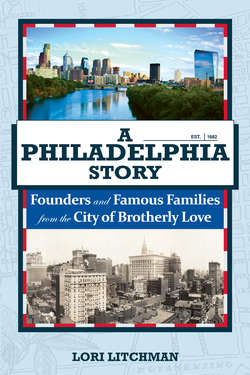Читать книгу A Philadelphia Story - Lori Litchman - Страница 17
На сайте Литреса книга снята с продажи.
Water, Water Everywhere
ОглавлениеTHE YELLOW FEVER EPIDEMIC OF 1793 also was the impetus for the city to clean up its water supply. Raw sewage was regularly discarded near drinking wells, and people suspected that these unsanitary conditions caused yellow fever. Another yellow-fever outbreak in 1798 hastened the public’s outcry for clean water. Citizens petitioned the city to figure out a way to clean up the city’s water supply, and by 1799, the city had formed a Watering Committee to address the issue. Adding another notch on its belt of firsts, Philadelphia became the first major city in the country and the world to take on the responsibility of supplying clean water to its populace.
Benjamin Henry Latrobe, considered to be one of the fathers of American architecture, happened to be in Philly during this time working on the building of the Bank of Philadelphia. The city asked Latrobe for his advice, and he said the best solution would be to tap the abundant water supply from the Schuylkill River and find a way to distribute the water to the city. He recommended the use of steam engines to power the system, even though the technology wasn’t widely used at this time. His plan called for the building of two separate structures for the engines. The first building would be on Chestnut Street and would funnel the water through a tunnel to Broad Street, where the second structure, a pump house, would move the water to a reservoir at the top of the building. This structure was to be located at Centre Square, where City Hall sits today. The water would then use the force of gravity to find its way through hollowed-out logs to water subscribers. The Watering Committee loved the plan and gave Latrobe the contract to build the structure, which opened for business in January 1801.
Benjamin Henry Latrobe, a father of American architecture
(Painting by Charles Willson Peale; via Wikimedia Commons, public domain)
The new water-supply system was a success, but it couldn’t keep up with the demand in the growing city. It was also very costly to maintain and had its share of technical difficulties. Yellow fever reared its head again in the early 1800s, and the Watering Committee again looked for a solution to its water crisis. One of Latrobe’s assistants, Frederick Graff, became the central figure in the construction of a new facility. Graff suggested that the new facility be located at “Faire Mount,” the highest point in the city at the time. Graff was the superintendent of the waterworks at Centre Square and was greatly influenced by Latrobe’s design there. Built in the Classical Revival style, the Fairmount Water Works opened for business in 1815. Not only was it ahead of its time in providing clean water to the population, but it was also an architectural marvel that became a popular tourist attraction. No trip to Philadelphia was complete without a visit there.
The Fairmount Water Works (shown here facing southeast, with the Philadelphia Museum of Art in the background) was an industrial and architectural marvel of its day.
(Photo: Historic American Buildings Survey, National Park Service; via Wikimedia Commons, public domain)
In 1819, the city decided to harness the power of the Schuylkill by building a dam across the expanse of the river. On July 23, 1821, the first drops of water spilled over the newly constructed dam, and a year later the Water Works transitioned from steam power to hydropower. Graff’s design of the Fairmount Water Works became the prototype for water supplies across the growing nation. Latrobe’s structure was eventually torn down in 1829.
Graff died in 1847, and his son, Frederick Graff Jr., took over as the superintendent of Fairmount Water Works. Graff Jr. saw a need to ensure the safety and cleanliness of the water supply for the city and pushed the city to acquire land along the banks of the Schuylkill River. The city started buying land in 1855 and continued to do so through 1890, effectively creating thousands of acres of a buffer zone that is known today as Fairmount Park. The Fairmount Park Commission was created in 1867, and Frederick Graff Jr. Was one of the first commissioners of the new government body. Today, Fairmount Park covers more than 9,200 acres and is one of the largest urban parks in the world.
From City Square to Boneyard and Back
WASHINGTON SQUARE IS A FAVORITE PLACE for Philadelphians and tourists to stroll through during any season to take in its pastoral beauty in the middle of the city. One of Penn’s original squares, it was laid out in the plan of the city in 1682. Back then it was called Southeast Square.
However, within 25 years of the founding of Philadelphia, the square had become a potter’s field—a cheap burial ground for the poor and unknown in the city. Later, during the Revolutionary War, deceased soldiers were buried in pits at the square. When the British took over Philadelphia in 1777, they kept prisoners of war in the Walnut Street Jail. Anyone who died in the prison ended up in the square. And—you guessed it—during the Yellow Fever Epidemic of 1793, the square became a massive grave site for those who succumbed to the sickness.
In 1815, the city decided to turn the 6.4-acre area back into a public park, planting trees and beautifying the space. The park was renamed Washington Square in 1825 in honor of George Washington.
Today, it serves as a public green space in the city and is a favorite resting area for lunching Philadelphians and visiting tourists. And no ghost tour is complete in the city without stopping by the square and talking about its storied history.
